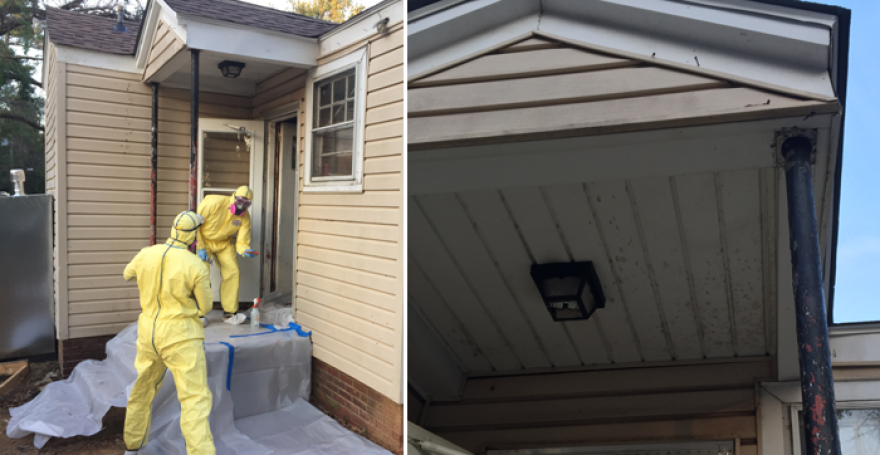In the span of 24 hours, two survivors of the 2015 flood celebrated rebuild milestones. Both residents entered the United Way of the Midlands 2-1-1 disaster case management intake system and both were contacted by rebuild organizations. 15 months after the flood, returning home has become a reality.

When Karen Albert cut the the ceremonial ribbon to mark the completion of repairs to her flood-damaged home, she acknowledged the possible sever between her and the volunteers with Reach Global Crisis Response.
"I feel a little melancholy, because this is a chapter in my life that's about to close," Albert said during the ribbon-cutting ceremony at her house January 14. "I mean, I talked to you almost everyday. Suddenly Mark is not going to be on speed dial," she added.
Mark Manning is construction manager for Reach Global Crisis Response. Manning said he and his team first walked into Albert's house in April of 2016.
"There was no floor, no sub-floor. You were walking on floor joists and the walls were gutted half-way up, everywhere," he said.
Rawls Creek runs behind Albert's house in Irmo. She said the small water way was a source of entertainment for her family.
"It's always been a neat creek. We had fun back here. My husband built little steps going down for the kids to play."
But the creek played a major roll in the flooding of Albert's house. "When I went to bed that night, the water was nowhere near the top of it. The Saluda River was full, this water had no where to go," she said.
Albert's sister and brother-in-law rescued her, the night of the flood. She was displaced for 15 months as groups of volunteers from nonprofits and faith-based organizations worked to reduce the cost of repairs and expedite her recovery.

Reach Global is the mission agency of the Evangelical Free Church of America. The agency has 35 people nation-wide serving either full-time or part-time. Katie Manning is Flood Site Coordinator in Columbia.
"Ms. Karen was given a couple of estimates by some general contractors and they estimated around $90,000 for the rebuild, we've been able to cut her cost tremendously," Manning said.

15 hours before Albert celebrated returning home, Johnnie Mae Davis in Columbia, was thanking countless volunteers as they worked around the clock in a rebuild blitz to bring repairs to her home near completion.
"I am overwhelmed, happy and joyful, and most of all thanking God for putting them all here to do it," Davis said.
Both residents entered the United Way of the Midlands 2-1-1 disaster case management intake system and both were contacted by a rebuild organization. SBP, formerly Saint Bernard Project, is the rebuild group working on Davis' home. SBP's South Carolina Director Michela Schildts said they are very excited to be near completion of the three-month rebuild.
"We started this home in September of 2016. The water didn't enter up too high into the house, but because of the interaction with the flooring it really caused a harmful atmosphere for them to live in," she said. After the flood, Davis and here family moved out of the house, because of mold.

"This is not an uncommon occurrence in South Carolina, this happens quite often in houses that have been flooded," Schildts said. When it flooded and when it rained for five days, the water came up from around her home and started to enter into her crawl space and slowly over five days the water started to enter into her home. Oversaturated wood in the home began to rot and mold started to grow."





